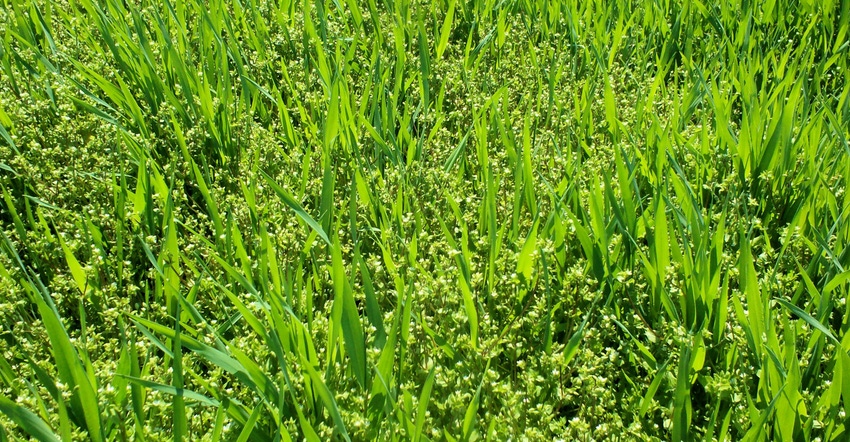November 12, 2019

Even during fall, foliar-applied herbicides can be effective if the plants are green and appear healthy.
For best activity, though, apply herbicides when daytime temperatures are above 50 degrees F and night-time temperatures are above 40 degrees for several days during application time. Don’t apply herbicides immediately after a frost.
Research from Iowa State University and Ohio State University shows that many perennial and biennial weeds can still be effectively killed after a few hard frosts.
Research with quackgrass and glyphosate found greater translocation of the herbicide after first frost than before frost.
Plants that have a prostrate growth habit, such as the biennial musk or bull thistle, will be more tolerant of frost since they are protected somewhat by heat released in the soil.
Scouting is important
With most plants it is possible to determine whether the foliage has been severely affected by frosts, so scouting the field prior to application is important to ensure active foliage is still present.
Regarding quackgrass and Canada thistle regrowth after harvest, if these weeds are greater than 8 inches in height, an application of glyphosate may provide good control of the above- and below-ground plant parts.
Watch temperatures
If temperatures drop below 28 degrees at night for more than four hours, these plants may die, and an herbicide application may not be effective.
Quackgrass can handle colder temperatures than Canada thistle. If warm temperatures — greater than 65 degrees — return for several days and the plants appear to be growing, an herbicide treatment may still be effective.
Controlling winter annuals
Fall is the best time to control dandelions, while both fall and early spring are good times to control winter annuals.
In fallow fields, a combination of glyphosate plus 2,4-D ester is effective for control of most winter annuals and dandelions.
Application of 2,4-D alone can control many winter annual weeds, but 2,4-D will not control chickweed and is less effective on dandelion than when in tank mixture with other herbicides.
Also, if you have a pure stand cereal rye cover crop that has broadleaf winter annual and or perennial weeds, 2,4-D, plus dicamba can be applied to control these weeds either now or in the early spring.
Use a residual herbicide when it gets colder
By late November, foliar herbicide effectiveness decreases, so the inclusion of a residual herbicide may be desirable in corn or soybean rotations.
If you include a residual herbicide, any chlorimuron-containing product (Canopy EX, Blend) is at the top of the list for soybeans while simazine is one of the better products for corn.
Other products that have had some success include Valor for soybeans and Basis Blend for corn. In general, 2,4-D should be tank-mixed with any residual product. Also, when applying systemic herbicides this late in the year, make sure to include adjuvant such as AMS or crop oil concentrate/methylated seed oil to ensure adequate uptake of the herbicide.
Note that if you are applying systemic herbicides with these spray additives in a cereal rye cover, crop injury may occur.
Source: Penn State Extension, which is solely responsible for the information provided and is wholly owned by the source. Informa Business Media and all its subsidiaries are not responsible for any of the content contained in this information asset.
You May Also Like




